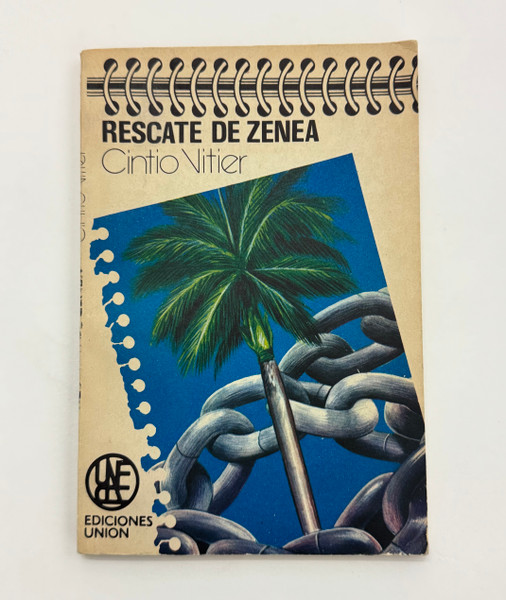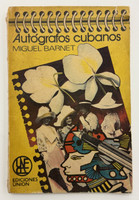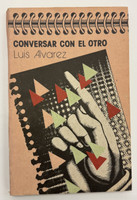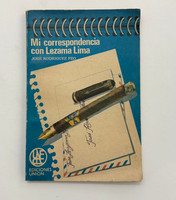- Travel
-
Exhibits
- La Portada Cubana
- Immortal Cuba: Artists Take on Their Heroes
- Seattle Poster Exhibit
- Sandra Dooley & Alejandrina Cué
- The Art of Wayacón
- Cuban Folk Art
- Cuba In Black And White
- 25 Years of Cuban Art Space
- Summer Folk Art Expo
- ¡SPRING AWAKENING FROM CUBA!
- Celebrating The Art Of Cuban Women
- Celebrating Paper, Affordable Art from Cuba
- Art of the Revolution
- Outsider Art
- Lost and Found
- En la lucha: Celebrating Cuban Women and Their Art
- Cuban Art Stash
- 100 Fires: 5 Cienfuegos Artists' Work on Paper
- Waya + Monte! Magic Realism in Cienfuegos
- Viva Cuba Viva! Poster Show
- Cultivando Sueños
- Black Lives Matter in Cuba Jan 9-March 27
- Leandro Soto: Crónicas visuales
- Cuban Canvas
-
Archive
- Global Reflection 2018: Spirit and Community
- Exhibit in the cloud: Contemporary Works on Paper
- MADE IN CUBA! MINNEAPOLIS EXHIBIT
- Cuban Posters and Photography from CCS collection
- AUTUMN SALE! Sept/Oct 2017
- SPRING ARTS AND CRAFT SALE
- Vuelo Directo/Non Stop: Alberto & Alejandro Lescay
- The Many Faces of Fidel
- Somos
- Made in Cuba!
- The US empire in Cuban graphics
- Made in Cuba/Seattle exhibit
- Entre Nos
- Looking Back
- Cuban Art Space
- Membership/Donate
- About Us
- Cuba News
-
TITLE ENTRY:
UNEAC/Ediciones Unión (cover designer: Francisco Masvidal, editor: Imeldo Álvarez, correction: Maria Elena Delgado, photographer: Héctor Delgado, author: Cintio Vitier), "Rescate de Zenea," 1987. Offset print, book.
BIO/CONTEXT SECTION:
Rescate de Zenea (Rescue of Zenea) is a critical historical study by Cintio Vitier examining accusations of treason against Cuban Romantic poet Juan Clemente Zenea (1832-1871), who was executed by firing squad during Cuba's Ten Years' War for independence. Published by Ediciones Unión in 1987, this book represents Vitier's effort to rehabilitate Zenea's reputation and challenge over a century of controversy surrounding the poet's political actions during the final months of his life.
Cover designer Francisco Masvidal creates a powerful symbolic composition featuring a lush green royal palm—Cuba's national tree—rising against a brilliant blue sky, its trunk and base entangled in heavy metallic chains rendered in dramatic gray tones with careful shading. The image perfectly captures the book's central tension: Cuban liberty and cultural identity (represented by the palm) constrained by accusations and historical misunderstanding (the chains). A decorative spiral binding motif appears at the top as a graphic element, echoing the notebook format seen in other Ediciones Unión publications.
The back cover features a formal portrait photograph of Juan Clemente Zenea by Héctor Delgado, showing the bearded poet in 19th-century attire. The accompanying text explains: "Love for the national landscape and an efficiency wounded by injustice marked the work of the great Romantic poet Juan Clemente Zenea. But the tragic end of his life, accused of treason and left in 'no man's land' by an indolent or cowardly historicist practice, has resulted in the most controversial case of Cuban letters. In these pages the studious Cintio Vitier, with the efficacy of a physician and the expertise of a detective, reviews old documents and places in our hands demonized information. Juan Clemente Zenea: guilty or innocent? The reader, assisted by Cintio Vitier, is in a position to render their verdict."
The table of contents reveals the book's rigorous scholarly structure: "Introducción," "Refutación de Valverde" (Refutation of Valverde), "Sinopsis para continuar" (Synopsis to continue), "El ensayo de Chaple" (Chaple's essay), "Nuevos documentos" (New documents), "Zenea en la correspondencia de Céspedes" (Zenea in Céspedes' correspondence), "El juicio de Martí sobre Zenea" (Martí's judgment on Zenea), and three documentary annexes.
The introduction states: "This book is dedicated exclusively to examining the accusations of treason to the Cuban revolutionary cause that for more than a century have been made against Juan Clemente Zenea; on the contrary, therefore, to his political actions during the last months of his life, without pretending a biographical study, much less his literary work, which will only be alluded to when it has been used within the argumentation of the accusers."
Cintio Vitier (1921-2009) was one of Cuba's most distinguished poets, essayists, and literary critics, a central figure in the Orígenes group, and winner of the Juan Rulfo Prize. His scholarly rehabilitation of Zenea represents an important moment in Cuban historiography, demonstrating how revolutionary Cuba reassessed 19th-century independence figures through rigorous documentary research. By defending Zenea against treason charges, Vitier participated in the broader project of constructing a usable revolutionary past that honored all genuine patriots, regardless of tragic historical misunderstandings.
-
-
Discover More at the Center for Cuban Studies







